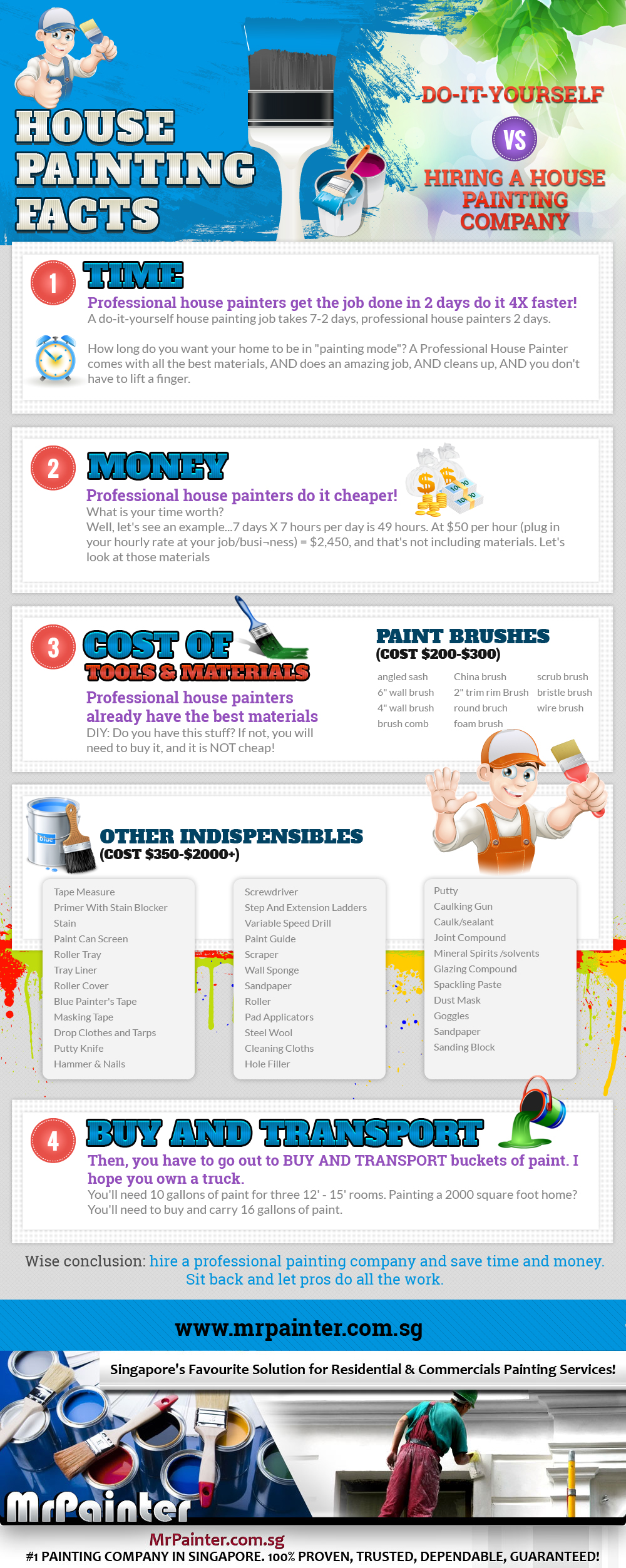Climate Considerations In Commercial Outside Paint: Important Information To Bear In Mind
Climate Considerations In Commercial Outside Paint: Important Information To Bear In Mind
Blog Article
Web Content Created By-Cash Stiles
When you're planning a business external painting task, don't undervalue the effect of climate on your results. You need to think about variables like temperature, humidity, and rainfall, as they can make or damage your paint job. For example, did you know that optimal problems require details temperature ranges and humidity levels? Stopping working to keep track of these facets can result in unequal surfaces and even damages to fresh paint. Comprehending these components is vital to achieving a long-lasting, professional result. So, what particular weather should you be wary of?
Temperature level Considerations
When it pertains to commercial outside painting, temperature plays a vital role in the outcome of your task. If you're painting in severe warmth, the paint can dry out also rapidly, bring about problems like poor attachment and irregular coatings. You wish to go for temperature levels in between 50 ° F and 85 ° F for the very best outcomes. Listed below 50 ° F, paint might not heal correctly, while over 85 ° F, you risk blistering and breaking.
Timing your task with the best temperatures is necessary. Begin your work early in the early morning or later in the afternoon when it's cooler, particularly throughout warm months.
Additionally, take into consideration the surface temperature level; it can be substantially more than the air temperature level, specifically on warm days. Utilize a surface area thermometer to inspect this before you begin.
If temperatures are unforeseeable, watch on the weather prediction. Abrupt temperature level drops or heat waves can hinder your strategies. You do not want to begin repainting only to have the problems transform mid-project.
Humidity Degrees
Humidity degrees significantly impact the success of your business external painting project. When the moisture is too expensive, it can hinder paint drying and healing, leading to a series of concerns like bad bond and complete high quality.
If https://www.azcentral.com/story/sponsor-story/arizona-painting-company/2019/01/01/5-tips-keep-your-homes-new-paint-looking-great/2433694002/ intending a task throughout wet conditions, you could find that the paint takes longer to dry, which can expand your task timeline and rise costs.
Conversely, low moisture can also present challenges. Paint might dry out also promptly, protecting against proper application and leading to an irregular finish.
You'll wish to keep an eye on the moisture degrees carefully to ensure you're functioning within the perfect range, usually between 40% and 70%.
To obtain the best results, consider using a hygrometer to gauge moisture prior to starting your task.
If you discover the degrees are outside the optimum range, you may need to adjust your timetable or select paints developed for variable conditions.
Always consult the producer's guidelines for specific suggestions on humidity resistance.
Rainfall Influence
Rainfall or snow can dramatically disrupt your commercial outside painting plans. When precipitation happens, it can remove newly used paint or create an uneven coating. Ideally, you want to choose days with completely dry climate to ensure the paint adheres properly and remedies properly. If you're captured in a shower, it's ideal to stop the project and wait on problems to improve.
Moreover, snow can be even more destructive. Not only does it create a wet surface, but it can also decrease temperatures, making it tough for paint to completely dry. This can bring about issues like peeling off or blistering down the line.
check it out to inspect the weather prediction before beginning your project. If rain or snow is forecasted, consider rescheduling.
Constantly keep in mind to allow adequate drying time in between layers, particularly if the weather continues to be unpredictable.
Conclusion
To conclude, keeping an eye on the climate is essential for a successful commercial outside painting project. By keeping track of temperature level, humidity, and rainfall, you can make sure the very best conditions for application and healing. Remember to intend your work around favorable weather and always adhere to supplier guidelines. With the right approach, you'll achieve a long-lasting, stunning finish that can stand up to the components. Don't let the weather capture you off guard-- remain educated and paint clever!
